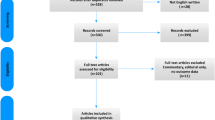Abstract
The objective of this study was to explore the influence of ureteral stent on renal pelvic pressure by urodynamic study. 41 patients (with unilateral renal and/or ureteral calculi) after minimally invasive percutaneous nephrolithotomy (MPCNL) were placed a 4.7-Fr ureteral stent and 16-Fr nephrostomy tube. Renal pelvic pressure of these patients was measured by urodynamic study at the 5–7 days after MPCNL. Renal pelvic pressure (RPP), intraabdominal pressure (IAP), and vesical pressure (VP) during the filling and voiding phases were detected by urodynamic study with intravesical perfusion. At the baseline, intraabdominal pressure (IAP0) was 27.52 ± 7.03 cmH2O, renal pelvic pressure (RPP0) was 33.07 ± 7.04 cmH2O; at the maximum cystometric bladder capacity (MCBC) during the filling phase, vesical pressure (VPvol) was 41.61 ± 10.34 cmH2O, renal pelvic pressure (RPPvol) was 39.44 ± 7.33 cmH2O; at the maximum vesical pressure during the voiding phase, vesical pressure (VPmax) was 74.95 ± 12.79 cmH2O, renal pelvic pressure (RPPmax) was 65.68 ± 17.03 cmH2O. (1) There was a strong relationship between RPP0 and IAP0 (P = 0.0001); (2) There was statistical significance among RPP0, RPPvol and RPPmax (P = 0.0001); (3) RPP was higher than 40 cmH2O during the voiding phase, and it was obviously relevant to the VP (P = 0.0001) but not to the MCBC (P = 0.2696). RPP increased mildly during the filling phase and dramatically during the voiding phase after stenting. RPP increased higher than the level required for a backflow (40 cmH2O) during the voiding phase. So it was encouraged to remove the stent at earlier stage or decrease using the ureteral stent if possible.




Similar content being viewed by others
References
Deliveliotis C, Chrisofos M, Gougousis E et al (2006) Is there a role for alpha1-blockers in treating double-J stent-related symptoms? Urology 67:35–39. doi:10.1016/j.urology.2005.07.038
Joshi HB, Stainthorpe A, MacDonagh RP et al (2003) Indwelling ureteral stent: evaluation of symptoms, quality of life and utility. J Urol 169:1065–1069. doi:10.1097/01.ju.0000048980.33855.90
Oh SJ, Ku JH, Byun SS et al (2005) Systemic chemotherapy in patients with indwelling ureteral stenting. Int J Urol 12:548–551. doi:10.1111/j.1442-2042.2005.01089.x
Ringel A, Richter S, Shalev M et al (2000) Late complications of ureteral stent. Eur Urol 38:41–44. doi:10.1159/000020250
Richter S, Ringel A, Shalev M et al (2000) The indwelling ureteric stent: a ‘friendly’ procedure with unfriendly high morbidity. BJU Int 85:408–411. doi:10.1046/j.1464-410x.2000.00478.x
Saxby MF (1997) Effects of percutaneous nephrolithotomy and extracorporeal shock wave lithotripsy on renal function and prostaglandin excretion. Scand J Urol Nephrol 31:141–144. doi:10.3109/00365599709070319
Tok A, Ozturk S, Tepeler A et al (2009) The effects of percutaneous nephrolithotomy on renal function in geriatric patients in the early postoperative period. Int Urol Nephrol 41:219–223. doi:10.1007/s11255-008-9482-0
Chatham JR, Dykes TE, Kennon WG et al (2002) Effect of percutaneous nephrolithotomy on differential renal function as measured by mercaptoacetyl triglycine nuclear renography. Urology 59:522–525. doi:10.1016/S0090-4295(02)01519-4
Guohua Z, Wen Z, Xun L et al (2007) The influence of minimally invasive percutaneous nephrolithotomy on renal pelvic pressure in vivo. Surg Laparosc Endosc Percutan Tech 17:307–310. doi:10.1097/SLE.0b013e31806e61f4
Karnak I, Bingol-Kologlu M, Karaagaoglu E et al (2001) Renal pelvic pressure responds with augmented increases to increments in intraabdominal pressure. J Pediatr Surg 36:901–904. doi:10.1053/jpsu.2001.23968
Constantinou CE (1978) Contractility of the pyeloureteral pacemaker system. Urol Int 33:399–416
Bingol-Kologlu M, Ergun EL, Caner B et al (2003) Increased intra-abdominal pressure results in both obstructive and nonobstructive types of impairments of renal pelvic excretion. Int Urol Nephrol 35:127–133. doi:10.1023/B:UROL.0000020298.04291.13
Mosli HA, Farsi HM, Al-zimaity MF et al (1991) Vesicoureteral reflux in patients with double pigtail stent. J Urol 146:966–969
Jung HU, Frimodt-Moller PC, Osther PJ et al (2006) Pharmacological effect on pyeloureteric dynamics with a clinical perspective: a review of the literature. Urol Res 34:341–350. doi:10.1007/s00240-006-0069-x
Lingeman JE, Preminger gm, Berger Y et al (2003) Use of temporary ureteral drainage stent after uncomplicated ureteroscopy: results from a phase II clinical trial. J Urol 169:1682–1688. doi:10.1097/01.ju.0000055600.18515.a1
Nabi G, Cook J, N’Dow J et al (2007) Outcomes of stenting after uncomplicated ureteroscopy: systematic review and meta-analysis. BMJ 334:572. doi:10.1136/bmj.39119.595081.55
Netto NR Jr, Ikonomidis J, Zillo C (2001) Routine ureteral stenting after ureteroscopy for ureteral lithiasis: is it really necessary? J Urol 166:1252–1254. doi:10.1097/00005392-200110000-00008
Shao Y, Zhuo J, Sun XW et al (2008) Nonstented versus routine stented ureteroscopic holmium laser lithotripsy: a prospective randomized trial. Urol Res 36:259–263. doi:10.1007/s00240-008-0153-5
Wang CJ, Huang SW, Chang CH (2009) Indications of stented uncomplicated ureteroscopic lithotripsy: a prospective randomized controlled study. Urol Res 37:83–88. doi:10.1007/s00240-009-0175-7
Hollenbeck BK, Schuster TG, Seifman BD et al (2003) Identifying patients who are suitable for stentless ureteroscopy following treatment of urolithiasis. J Urol 170:103–106. doi:10.1097/01.ju.0000069546.53896.6a
Author information
Authors and Affiliations
Corresponding author
Rights and permissions
About this article
Cite this article
Shao, Y., Shen, Zj., Zhuo, J. et al. The influence of ureteral stent on renal pelvic pressure in vivo. Urol Res 37, 221–225 (2009). https://doi.org/10.1007/s00240-009-0199-z
Received:
Accepted:
Published:
Issue Date:
DOI: https://doi.org/10.1007/s00240-009-0199-z




